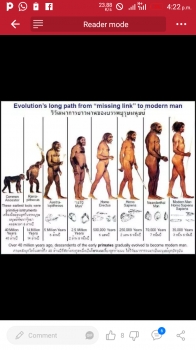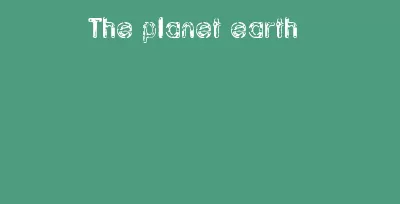News And PoliticsCommunications And EntertainmentHealth And LifestyleRelationship And MarriageMotivationalsBusiness And MoneyFood And KitchenPersonal Care And BeautyArts And EducationGeneralHealthFamily And HolidaysBusinessLifetipsRelationshipsEntertainmentCelebrityBeautyReligion And PrinciplesSports And FitnessVehicles And MobilityGive AidOthers
profile/1532FB_IMG_16020448741449438.jpg
Debbiepearl4

The Origin And Nature Of Man
~2.3 mins read
THE ORIGIN OF MAN:
The question "what is the Origin of Man is a controversial one which has a long history". There are different fundamental theories about the existence of man, these are:
1. Evolutionism.
2 Creationism ( Biblical belief).
3. Big bang theory.
4. Cosmogonies ( Stories is creation) from African background culture.
1. Evolutionism:
This theory is associated with Charles Darwin. He published two books to prove this theory.
a. The Origin Of Species in 1866
b. The Decent Of Man in 1871
In his theory of natural selection thesis in The Origin Of Species, Charles Darwin observed competition and struggle for survival among the species.
He reasoned that the weaker and diseased form of life die off and become extinct, causing all living organisms into stronger and more virulent forms.
In The Decent Of Man, Charles Darwin maintained that man must have evolved from a single celled organism through a long process of evolution.
2. Creationism:
Christians maintain the theory of creationism based on biblical belief.
3. The Big Bang Theory:
This is the generally accepted scientific theory of birth and evolution of the universe.
The theory states that 12-15 billion years ago, the universe was borne from a cosmic explosion or big bang. This theory came into lime light in 1927.
When a Belgian priest and astronomer, George Lemaitre presented this theory. A day without yesterday. Lemaitre is the father of the big bang theory.
4. Cosmic Environment:
The environment refers to the sum total of all the physical things that sorrounds man, including the occeans and mountains.
Global realm or environment includes:
a. Atmosphere: The region of earth covered by air. The space between the earth and sky.
b. Hydrosphere: The region of earth covered by water. Example, the sea.
c. Litosphere: The region of earth covered by land. Example, mountains.
d. Biosphere: The summation of the first three.
THE NATURE AND DESTINY OF MAN:
a. Humanism:
They assert that man is none than matter, more than a complex physical organism.
b. Naturalism:
This is the doctrine that man is simply a highly developed organism that has evolved out of earlier and simpler forms of life as a result of natural processes working upon the matter of which the universe is composed.
For the Nihisist, man is an accidental product of a blind process in a universe that neither knows nor cares for his existence.
profile/1532FB_IMG_16020448741449438.jpg
Debbiepearl4

The Planet Earth
~5.5 mins read
The planet earth
Earth, third planet from the Sunand the fifth largest planet in thesolar system in terms of size and mass. Its single most outstanding feature is that its near-surfaceenvironments are the only places in the universe known to harbour life. It is designated by the symbol â™. Earth’s name inEnglish, the international language of astronomy, derives from Old English and Germanic words for ground and earth, and it is the only name for a planet of the solar system that does not come from Greco-Roman mythology.

Earth
A composite image of Earth captured by instruments aboard NASA's Suomi National Polar-orbiting Partnership satellite, 2012.
NASA/NOAA/GSFC/Suomi NPP/VIIRS/Norman Kuring
Play video on original page


BRITANNICA QUIZ
True or False: All About the Earth
When did people really start believing that the Earth is round? How far apart are the Earth and the Sun, anyway? See how much you know about our home planet right here.
Since the Copernican revolutionof the 16th century, at which time the Polish astronomerNicolaus Copernicus proposed a Sun-centred model of the universe (seeheliocentric system), enlightened thinkers have regarded Earth as a planet like the others of the solar system. Concurrent sea voyages provided practical proof that Earth is a globe, just as Galileo’s use of his newly invented telescope in the early 17th century soon showed various other planets to be globes as well. It was only after the dawn of thespace age, however, when photographs from rockets and orbiting spacecraft first captured the dramatic curvature of Earth’shorizon, that the conception of Earth as a roughly spherical planet rather than as a flat entity was verified by direct humanobservation. Humans first witnessed Earth as a complete orb floating in the inky blackness of space in December 1968 whenApollo 8 carried astronauts around the Moon. Robotic space probes on their way to destinations beyond Earth, such as the Galileo and the Near Earth Asteroid Rendezvous (NEAR) spacecraft in the 1990s, also looked back with their cameras to provide other unique portraits of the planet.
Viewed from another planet in the solar system, Earth would appear bright and bluish in colour. Easiest to see through a large telescope would be its atmospheric features, chiefly the swirling white cloud patterns of midlatitude and tropical storms, ranged in roughly latitudinal belts around the planet. The polar regions also would appear a brilliant white, because of the clouds above and the snow and ice below. Beneath the changing patterns of clouds would appear the much darker blue-black oceans, interrupted by occasional tawny patches ofdesert lands. The green landscapes that harbour most human life would not be easily seen from space. Not only do they constitute a modest fraction of the land area, which itself is less than one-third of Earth’s surface, but they are often obscured by clouds. Over the course of the seasons, some changes in the storm patterns and cloud belts on Earth would be observed. Also prominent would be the growth and recession of the winter snowcap across land areas of the Northern Hemisphere.
Advertisement
1 like
1 Comment(s) x
4.6k
Shares
whatsapp sharing button 777 facebook sharing button messenger sharing button twitter sharing button
Comment posted
Debbiepearl4 (Basic) 6 seconds ago
Okay
Victor21 (Premium) 3 hours ago
Ok
Advertisement
Articles that may interest you
Astronomers discover inhabitable earth size planet
Astronomers discover inhabitable earth size planet Sammyesx 7 months 64
The planet zips around its star every 3.14 days - a number famous for being the first three digits of the universal mathematics constant, piAstronomer...
10 most powerful animal bite on planet earth.
10 most powerful animal bite on planet earth. victor21 1 month 104
1. Saltwater CrocodileCrocodile Bite Force: 3,700 PSIDr. Gregory Erickson, professor of anatomy and paleobiology at Florida State Univers...
Shaka Momoh Is Dead! Diabetes Kills Owner Of Planet One Entertainment
Shaka Momoh Is Dead! Diabetes Kills Owner Of Planet One Entertainment RachaelB 4 months 69
The owner of popular entertainment hub, Planet One, in Lagos state, Shaka Momoh, has died, IgbereTV reports.He died today January 14 after a long batt...
This is one of the most profitable agricultural business ever on this planet with detailed breakdown
This is one of the most profitable agricultural business ever on this planet with detailed breakdown Bayus03 3 months 74
Hello there, Pig farming or piggery as it is fondly called is one of the most lucrative farming practices in Nigeria due to some obvious facts; P...
Best Reasons Why Nigeria Is The Best Nation On The Planet
Best Reasons Why Nigeria Is The Best Nation On The Planet KingSammy 8 months 80
1. Climate conditions While in this cool nation, you can appreciate practically a wide range of atmosphere conditions like precipitation, muggine...
Advertisement
Uploads that may interest you
6 Gardening Life Hacks - Earth Day Special.mp4
6 Gardening Life Hacks - Earth Day Special.mp4
6 Gardening Life Hacks - Earth Day Special.mp4 Crazy_Russian_Hacker 46mb 188
6 Gardening Life Hacks - Earth Day Special from Crazy Russian Hacker
25. James Lovelock - Gaia - A New Look at Life on Earth (1979)(2000).pdf
25. James Lovelock - Gaia - A New Look at Life on Earth (1979)(2000).pdf
25. James Lovelock - Gaia - A New Look At Life On Earth (1979)(2000).pdf Guest Abby Gomez 14mb 117
In this classic work that continues to inspire its many readers, Jim Lovelock puts forward his idea that life on earth functions as a single organism. Written for non-scientists, Gaia is a journey through time and space in search of evidence with which to support a new and radically different model of our planet. In contrast to conventional belief that living matter is passive in the face of threats to its existence, the book explores the hypothesis that the earth's living matter air, ocean, and land surfaces forms a complex system that has the capacity to keep the Earth a fit place for life.
When-God-Walked-the-Earth-joyner_-rick.pdf
When-God-Walked-the-Earth-joyner_-rick.pdf
When-God-Walked-the-Earth-joyner_-rick.pdf Mkeji27 1mb 21
When God walked the earth by Rick Joyner
Advertisement
Loading...
|
Advertisement

Link socials
Matches
Loading...
